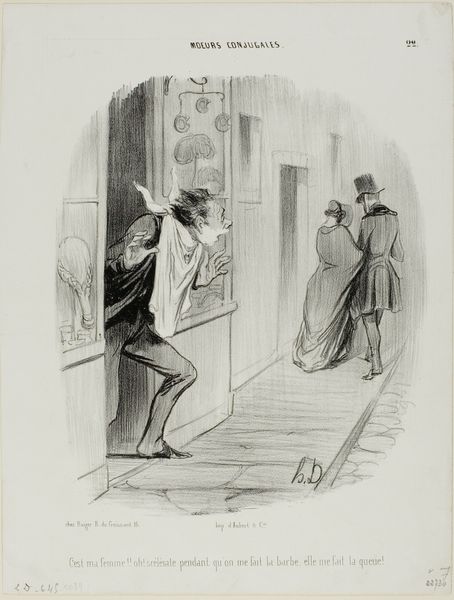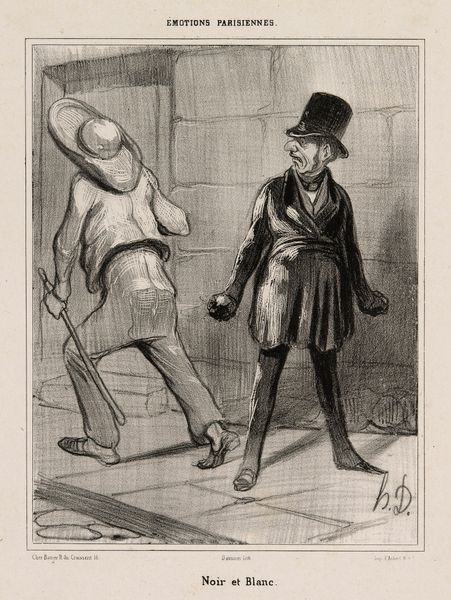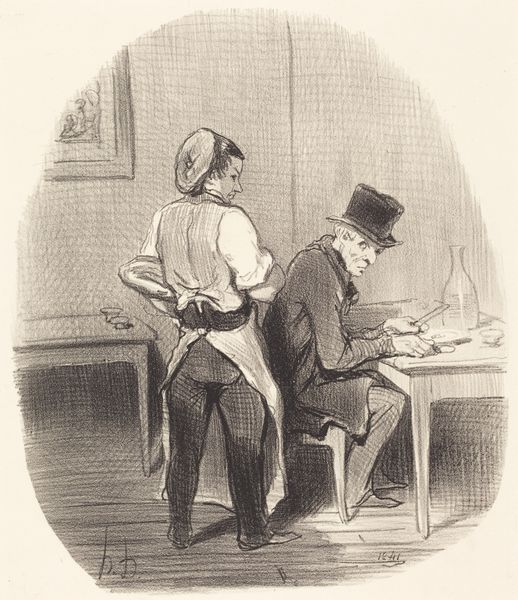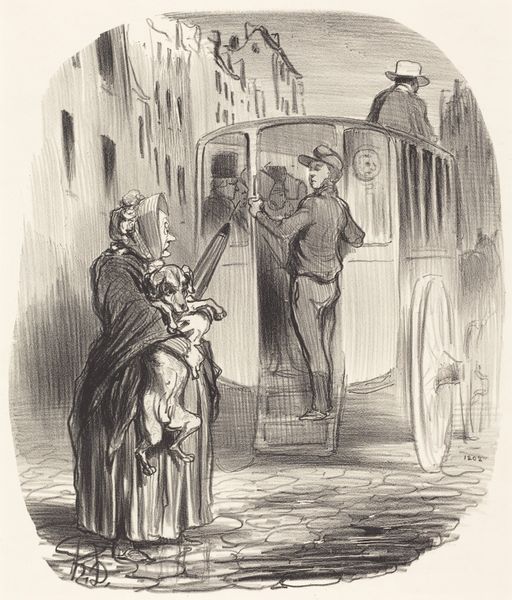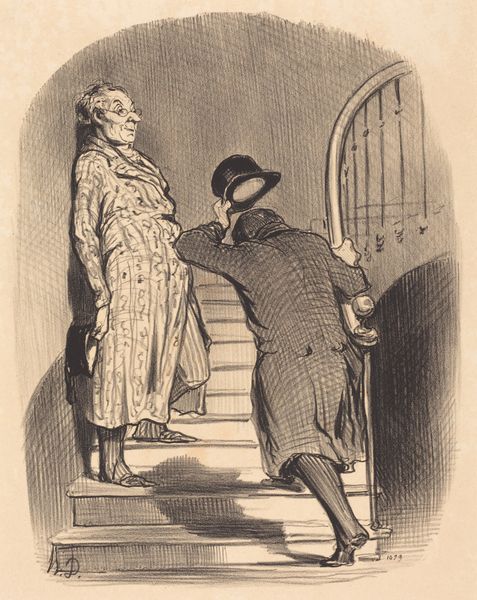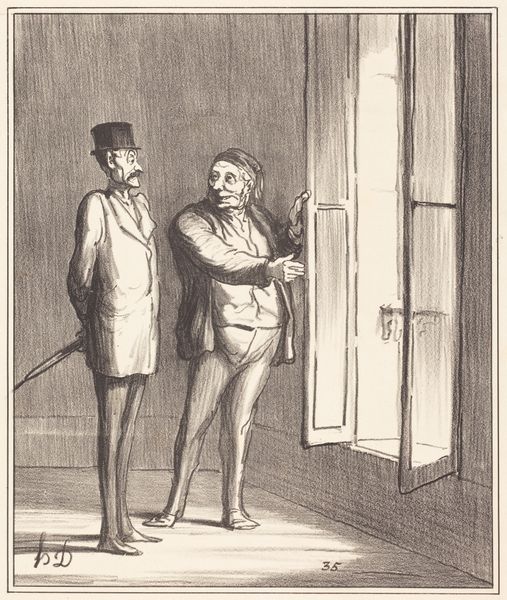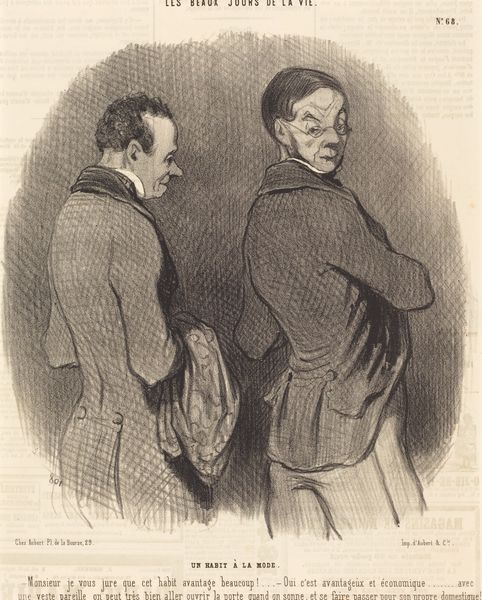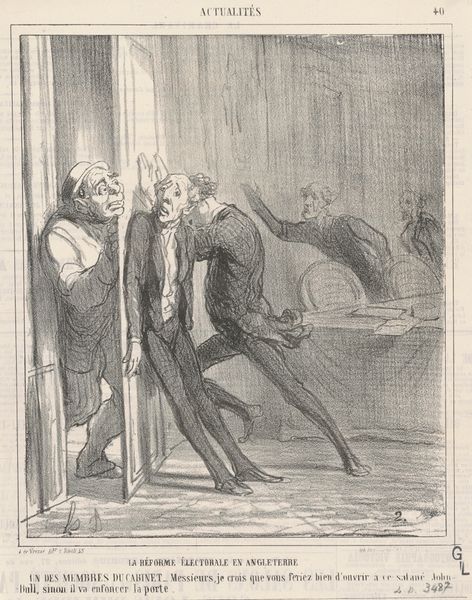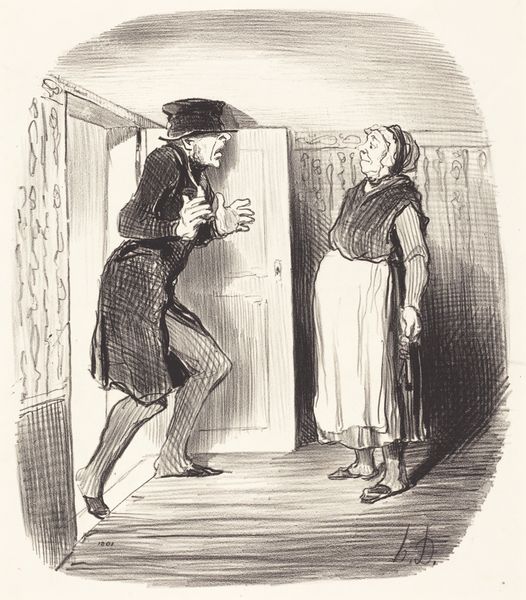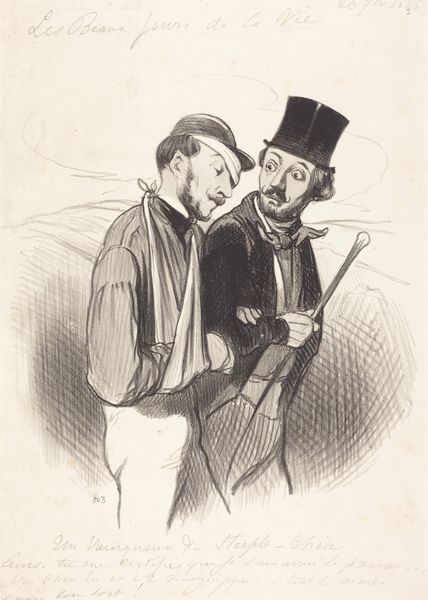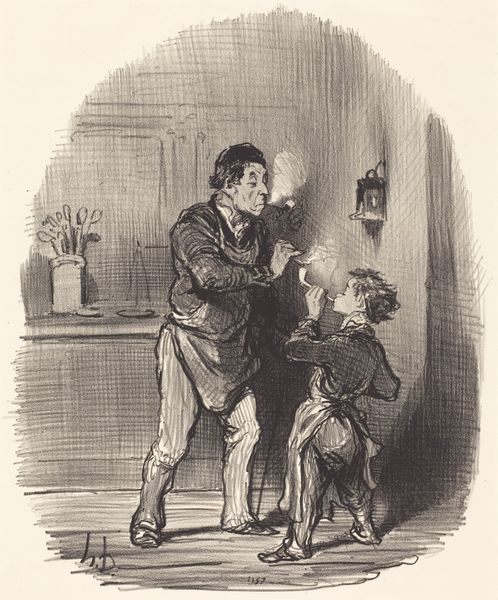
drawing, lithograph, print, pen
#
portrait
#
drawing
#
lithograph
# print
#
caricature
#
caricature
#
romanticism
#
pen
#
portrait drawing
#
genre-painting
Copyright: National Gallery of Art: CC0 1.0
Curator: This lithograph, a print made with pen, ink, and crayon, is by Honoré Daumier and is titled "Ce logement est un peu cher, pour la place Royale...", or "This apartment is a bit expensive, for the Place Royale..." It was created in 1847. Editor: Immediately, I'm struck by the stark contrast; the looming, darkly clad figure next to the man in his more homely nightclothes creates such a visually tense space. Curator: Indeed, Daumier often used caricature to critique the societal disparities of 19th-century France. Consider the Place Royale—a prestigious address, suggesting wealth. Daumier leverages its symbolic meaning to spotlight socio-economic struggles of the time. Editor: Absolutely. We have this seemingly common scenario but beneath it, we can unpack commentary on class and economic disparity that persist. It makes you think about affordable housing crises, and that makes this piece feel as relevant as ever. Curator: And the figure holding the umbrella represents more than just a landlord or debt collector; he's symbolic of oppressive structures, leveraging power imbalances of the time. His almost menacing presence suggests the eviction might be looming. Editor: Right, there’s something inherently unsettling about that looming figure; the contrast he provides draws immediate attention to the economic power dynamics embedded in what would have been, on its face, a very banal interaction between two men. What are your thoughts on Daumier’s emphasis on class difference and its continuing cultural impact today? Curator: His prints, reproduced widely, served as visual arguments, sparking debate about social inequalities. This work invites discussion about class differences and their reverberations, encouraging introspection. Daumier ensured his art wasn't confined to galleries; he ensured it played a public role. Editor: Definitely, Daumier successfully highlighted the discomfort inherent to class disparities. Seeing it today is less an antiquated observation and more a renewed recognition of a system with problems that remain pervasive. It's the ability of a piece like this to traverse time, offering context and critique in new eras, that still has so much power.
Comments
No comments
Be the first to comment and join the conversation on the ultimate creative platform.


